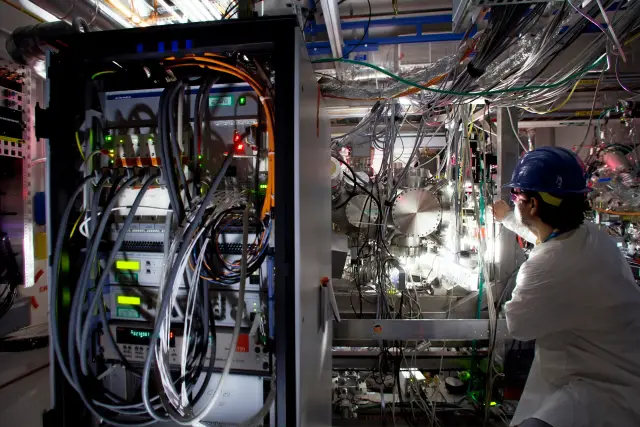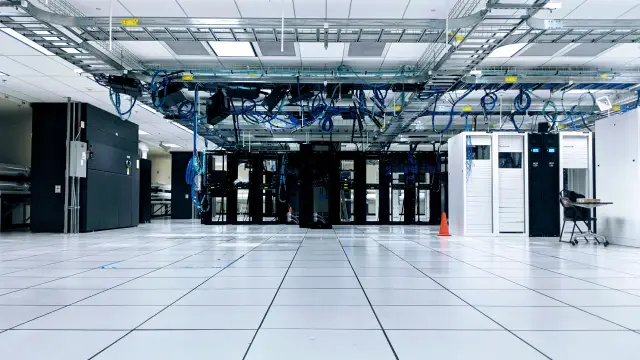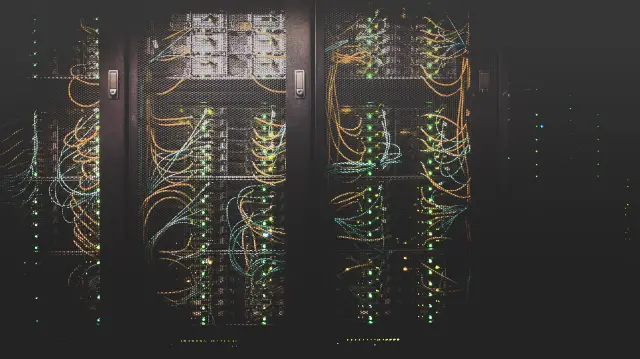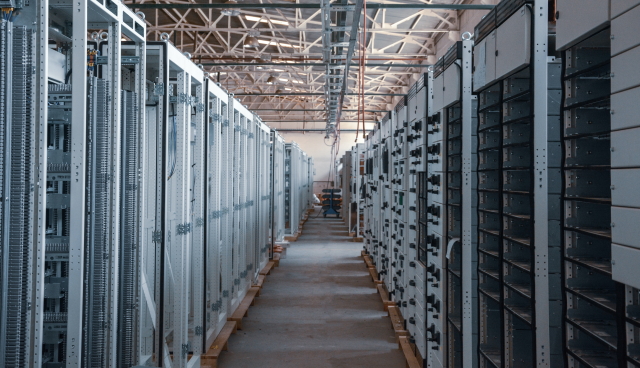
A server cluster is a group of servers that collaborate on a single system to provide users with increased availability. These clusters are used to minimise downtime and outages by allowing another server to take over in the event of an outage, a feature called redundancy. In this article, we will explain all about server clustering, which increases reliability and scalability of server systems..
{autotoc}
What Is A Server Cluster?
A server cluster is a group of servers working together with a common IP address (the IP address is common through server and firewall configurations). Clustered servers are commonly used for servers that include various services such as file servers, print servers, and more commonly for required high-availablity services such as databases, and other critical services. A server cluster maintains the consistency of server services over time. It also ensures higher availability, proper load balancing, and system scalability.
In a server cluster, each of the participating server is called a node. Each server which has its own resources such as hard drive, RAM, and CPU to use. The reason for implementing such a configuration is so that if one server within the cluster fails, then the load is transferred to another server, without any downtime. Clusters thereofire are used to reduce downtime and outages.
How does server clustering work?
A collection of servers is linked to a single system. When one of these servers fails, the workload is redistributed to another server so that the client does not experience any downtime.
Clustered servers are typically used for applications that require frequent data updates, with file, print, database, and messaging servers being the most common clusters.
Overall, clustering servers provide clients with a higher level of availability, reliability, and scalability than any single server could.
In a clustered server environment, each server is responsible for the ownership and management of its own devices, as well as having a copy of the operating system (along with any applications or services) that is used to run the other servers in the cluster.
The servers in the cluster are configured to collaborate in order to increase data security and maintain the consistency of the cluster configuration over time.

Cluster Deficiency and Outage Protection
The primary reason for using server clusters is to avoid outages and downtime. As previously stated, clustered servers provide increased protection against an entire network going dark during a power outage.
Clustered servers provide protection against three types of outages: Application or service failures, hardware or system failures, site failures.
We'll go over these types of outages in more detail in the following sections, but in short, server clustering helps protect against outages caused by software failure, hardware failure, and extraneous events acting on the physical server site.
1. Failure of an application or service
Application or service failure events include any outages that occur as a result of critical errors involving software or services that are critical to the server's or data center's operation.
These failures can be caused by a variety of factors, the majority of which are unavoidable. Although most servers have redundancy measures in place to prevent this type of failure, application or service failures are difficult to predict and plan for.
Because server monitoring data is complex, it can be difficult for server administrators to identify and resolve potential issues before they cause an outage.
While a vigilant, knowledgeable, and proactive server administrator can identify and address these issues before they become a problem, no server administrator can provide comprehensive protection against this type of failure.
2. Failure of the System or Hardware
This type of outage occurs as a result of physical hardware failures on which the server is running.
These outages can be caused by a wide range of factors and are affected by virtually every type of component critical to the operation of a server or data centre.
While server components' reliability and functionality are steadily improving, no component is immune to failure.
Overheating, poor optimization, or simply the component reaching the end of its product lifespan can all cause this failure.
Because of their importance in keeping the server running, processors, physical memory, and hard discs are among the most prone to failure.

3. Site Issues
In most cases, site failures are caused by events that occur outside of the data centre environment.
While there are many events that can cause a site failure in theory, the events that are most commonly to blame for site failures are natural disasters that cause widespread power outages, as well as those that can damage the hardware within the data centre.
While some natural disasters cannot be avoided by anything other than careful location selection, those caused by power outages and their associated complications can be mitigated by using redundancy measures such as server clusters.
These redundancy measures are critical for data centres located in areas prone to natural disasters.
Although issues that could potentially lead to these three distinct types of failures can be identified and resolved, redundancy measures such as server clustering are the only way to ensure near-complete reliability.
Server clustering is an excellent way to ensure unfailing performance in data centres that require it every minute of every day of the year.

Clustering Servers Are Divided into Three Types
Server clusters are classified into three types based on how the cluster system (referred to as a node) is connected to the device responsible for storing configuration data.
A single (or standard) quorum cluster, a majority node set cluster, and a single node cluster are the three types, and they are discussed in more detail below.
1. Quorum Cluster with a Single (or Standard) Quorum
This cluster is the most commonly used and consists of multiple nodes with one or more cluster disk arrays that use a single connection device (called a bus).
Each individual cluster disk array within the cluster is managed and owned by a single server. The system used to determine whether or not each individual cluster is online and uncompromised is referred to as the titular quorum.
In practise, single quorum clusters are quite simple. Each node has a "vote" that it uses to notify the central bus that it is online and functional.
The cluster will remain operational as long as more than half of the nodes in a single quorum cluster are online. If more than half of the nodes in the cluster are unresponsive, the cluster will stop working until the problems with the individual nodes are resolved.

2. Majority Node Set Cluster
This model, like the previous one, differs in that each node has its own copy of the cluster's configuration data, which is consistent across all nodes.
This model is best suited for clusters with individual servers in different geographical locations.
While majority node set clusters function similarly to single quorum clusters, the former differs in that it does not require a shared storage bus to operate because each node stores a duplicate of the quorum data locally.
While this does not eliminate the utility of a shared bus entirely, it does provide more flexibility when configuring remote servers.

3. Single Node Cluster
This model, which is most commonly used for testing, has a single node. Single node clusters are frequently used as a tool for cluster application development and research, but their utility is severely limited by their lack of failover.
Because they are made up of only one node, the failure of a single node renders all cluster groups inoperable.
A customer service representative at a local data centre or web hosting provider can explain the differences between the three models and help you decide which is best for your business.
Unless you have unusual requirements (or are located in multiple, geographically dispersed locations), the Standard Quorum Cluster is your best bet.
There are other names that are given to server clustering types, which we will discuss here.
4. High-Performance Server Clusters for High Availablity
Clusters with high availability (HA) are the best option for websites with a lot of traffic. For online stores or applications that require optimal, continuous performance from their critical systems, HA clusters could be used.
Because high availability clusters are based on redundant hardware and software, they help you avoid single points of failure. They are essential for failover, system backups, and load balancing. These devices are made up of several hosts that are able to take over in the event that a specific server fails or overloads, ensuring that there will be as little downtime as possible.
High Availability Server Architecture
There are two types of architecture for HA clusters: active-active and active-passive.
All nodes in an active-active cluster balance loads concurrently. An active-passive architecture, on the other hand, assigns all workloads to a primary node. A backup node is kept ready for any outages in the meantime.
Because it has the primary node's database on it, the secondary server is also referred to as a hot spare or hot standby. This is a less expensive implementation than active-active since the hot standby is prepared to take over in the event that a component fails.
High availability clusters facilitate easy scalability and increase your reliability. Not to mention, they provide strong infrastructure security and more effective maintenance. You can cut expenses, reduce downtime, and improve user experience with these clusters.
5. Load Balancing Clusters
Server farms called load balancing clusters divide up user requests among several active nodes. The three primary advantages are better workload distribution, redundancy assurance, and faster operations.
You can divide workloads among servers and separate functions with load balancing. This arrangement aids in optimizing resource usage. It employs load balancing software to assign requests, according to an algorithm, to various servers. Outgoing responses are also managed by the software.
Load balancers are used in a high availability cluster's active-active configuration. The load balancer is used by the HA cluster to respond to various requests and send them to separate servers. There are two possible distributions: symmetric and asymmetric, depending on the configuration data and computer performance.
The load balancer keeps track of the availability of nodes in an active-passive high availability cluster. A node that shuts down waits to send any more traffic until it is back up and running.
Additionally, you can use multiple links simultaneously thanks to load balancing architecture. When it comes to infrastructure that needs redundant communication, this feature is extremely helpful. Data centers and telecommunications companies, for instance, frequently use this architecture. Better scalability, cost reduction, and high-bandwidth data transfer optimization are the main advantages.
6. Clustered and High-Performance Storage
Supercomputers, another name for high-performance clusters, are machines with greater capacity, dependability, and performance. They are most commonly used by businesses with resource-intensive workloads.
Many PCs linked to the same network make up a high-performance server cluster. To process data faster, you can link several of these clusters to the network's data storage hubs. Put differently, seamless performance and fast data transfers are provided along with high-performance data storage clusters.
Artificial intelligence (AI) and the Internet of Things (IoT) are two major applications for these clusters. To power complex projects like live streaming, storm prediction, and patient diagnosis, they process massive amounts of real-time data. These characteristics of high-performance cluster applications are also advantageous for media, research and financial services,
7. Storage with clustering capabilities
Clustered storage typically involves a minimum of two storage servers. They enable you to enhance the performance, input/output (I/O) capabilities, and reliability of your system. Depending on the specific needs of your business and the amount of data you need to store, you have the option to choose between a tightly or loosely coupled architecture.
An architecture that is tightly coupled focuses on primary storage. It organizes data into smaller blocks distributed among nodes.
On the other hand, a self-contained, loosely coupled architecture provides greater flexibility. However, it does not have the capability to store data across nodes. In a loosely coupled architecture, the performance and capacity of the data storage node become the determining factors. Scaling with new nodes is not possible in a loosely coupled architecture.
How can server clusters enhance scalability?
Server clusters enable horizontal scalability within the system. IT teams have the flexibility to effortlessly incorporate additional nodes to handle the desired volume of traffic or data transmissions.
In addition, the presence of additional servers enhances scalability. Just one server is sufficient to handle all business processes. Having additional servers in the configuration provides greater flexibility and scalability in terms of resources, leading to enhanced fault tolerance and performance.
How can server clusters achieve load balancing?
Server clusters ensure efficient workload distribution by automatically transferring excess tasks to other nodes in the system. This can be achieved through either an active-active or active-passive configuration.
When the incoming traffic or data processing queries surpass the capacity of one server, they can be transferred to another cluster server that is available. Usually, this transition can occur in two different ways — through manual or automatic means.
Using manual clusters can be problematic as it requires configuring a node to the same data IP address, resulting in downtime. Even a brief period of downtime can have significant financial or operational consequences. However, with automatic clusters, you have the ability to pre-configure software settings. This cluster setup performs the server switch automatically.
How can server clusters ensure high availability?
It is ideal to use multiple web and app nodes to ensure hardware redundancy. This type of architecture is commonly referred to as a high availability cluster. Ensuring uninterrupted operation in the event of a component failure is crucial. This is particularly evident when the operating system experiences a failure, lacking redundancy in a single server. With no site failures, your users will remain unaware of any server crashes.
HA clusters use an active-active server configuration to seamlessly swap resources without any service interruption. While this configuration is more efficient, it usually comes at a higher cost compared to an active-passive (or hot standby) configuration, as all nodes in the system need to remain active.
Why Should You Cluster Servers?
Redundancy is the key to a secure IT infrastructure. Creating a cluster of servers on a single network provides maximum redundancy and ensures that a single error does not shut down your entire network, rendering your services inaccessible and costing your business vital revenue.
